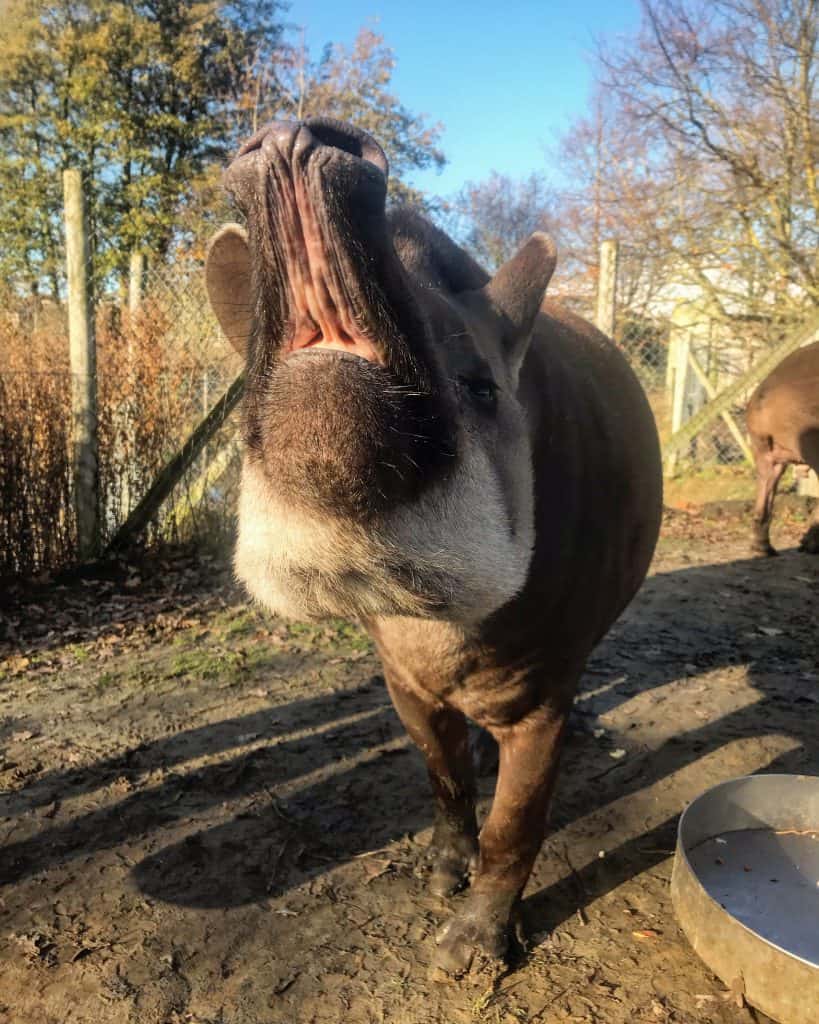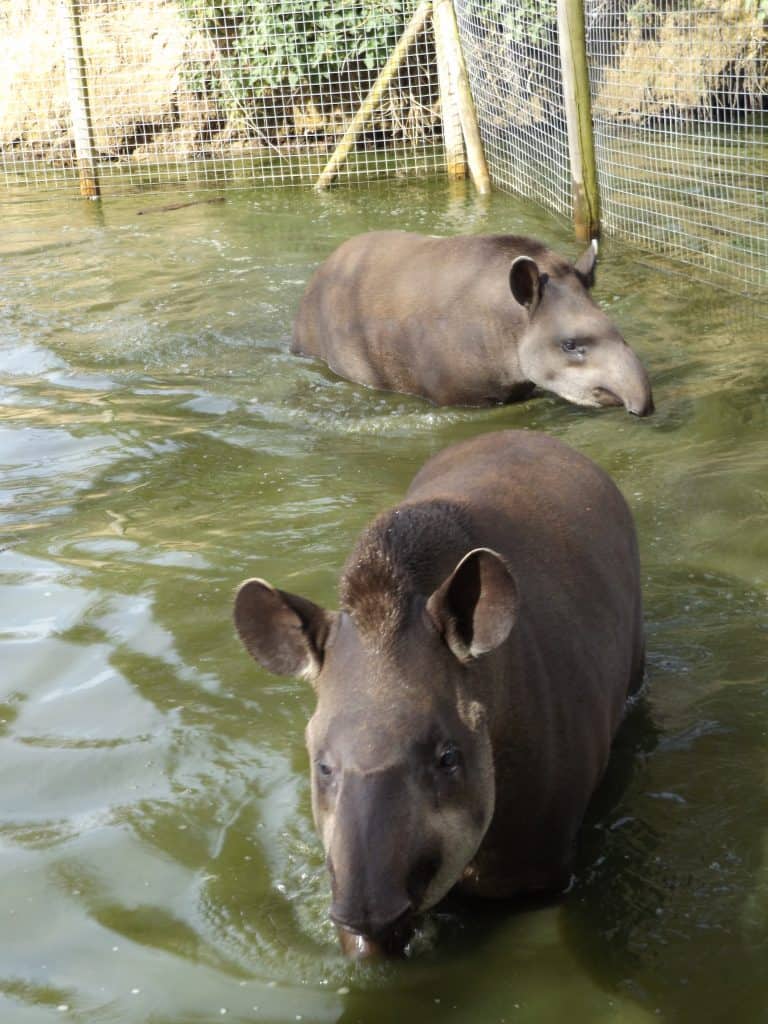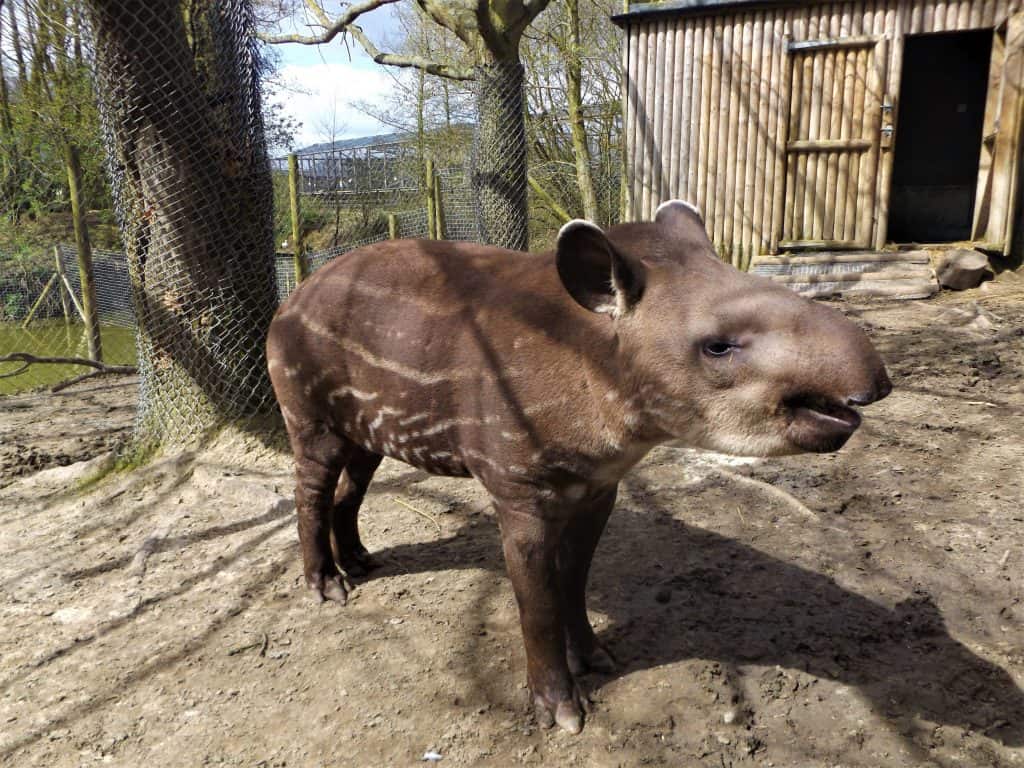I think we can all agree it has been far too long since I last spoke to you all about the Lowland Tapirs at the park. For anyone that might be new to the park or may not know much about our pair, I will give you a little refresher about them.

Nando our male will be 8 years old on 1st September, he came to us when he was 9 months old from a zoo in Germany. I remember when he first arrived, he still had some of his baby spots and was a lot smaller than what he is now. Female, Kathleen will turn 9 on 28th December and she came to us when she was over 2 years old from a private collection in the UK. She has done so well since being with us! She wouldn’t go into the water or even go to the other side of the enclosure when she first arrived; but that’s all changed, now she a different woman!

In 2017 we were very excited to announce the birth of Matilda, she will be 3 this year and has now moved to another collection in the UK.

The Oldest Tapir In Captivity
Sadly, in recent news you may have heard about the death of the oldest tapir in captivity aged 42! (Wow!!) This is a very impressive age considering they usually have a lifespan of between 25-30 years old in captivity. Kingut was a Malayan tapir, Tapirus indicus. The Malayan Tapir is the largest tapir species and the only one found outside the New World. In the wild, these shy ungulates inhabit the dense rainforests of Indonesia, Malaysia, Thailand and Myanmar. They can reach up to 3 feet 6 inches tall with large males weighing in excess of 500 kg.
In contrast our pair are Lowland Tapirs, Tapirus terrestris which dwell in the rain forests of South America and can weigh between (a much smaller) 150-250 kg and stand about 3 feet tall.
Looking to the Future
But its not all sad news, as previously mentioned Nando and Kathleen had their first calf in 2017 and I’m hoping 2020 will bring us some good news and tiny toe prints! We are hoping Kathleen is pregnant, she’s certainly looking quite round and laying down resting a lot more.
If you saw Matilda, you will remember how small she was and her adorable brown/beige striped watermelon look.

It has been a long time coming as a tapir’s gestation is 13 months long, so I am very ready for it to happen now! I have been chatting to Kathleen and she has other ideas- she won’t be rushed into anything! So, I’m sorry guys and girls the wait continues but all good things come to those that wait, right?!
After the long gestation period, a single tapir baby is born while mum’s standing up. The little one’s eyes are open, and it can stand up within a couple of hours of birth. The watermelon pattern acts as great camouflage for the calf, especially when lying down on the ground. Markings start to fade after a few months and by six months old, it looks like a miniature adult. They will suckle for several months until the mother stops producing milk and at 18 months the calf is fully grown but may stay with its mother for a little longer. By about 2 to 4 years they are considered mature.

The Lowland tapir is more abundant than the other three species of tapir however it is still considered vulnerable to extinction on the IUCN Red List. One reason for the decrease in their population is that Brazilian tapirs are hunted for their meat and hide. Like most wild animals, their habitat is being destroyed by deforestation and agricultural development.
How you can help?
There are organisations that help preserve their habitat, you can donate to the Tapir Specialist Group or the Tapir Preservation Fund. If you don’t want to do that come and join us at the park and see Nando and Kathleen up close and learn about them to spread the word about these amazing and unique creatures!


